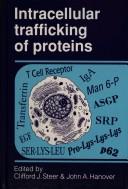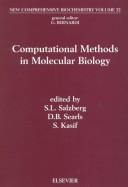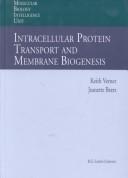| Listing 1 - 10 of 211 | << page >> |
Sort by
|

ISBN: 0521361206 Year: 1991 Volume: vol 5 Publisher: Cambridge : Cambridge university press,
Abstract | Keywords | Export | Availability | Bookmark
 Loading...
Loading...Choose an application
- Reference Manager
- EndNote
- RefWorks (Direct export to RefWorks)
Proteins --- Physiological transport. --- Physiological transport --- Proteins - Physiological transport.
Book
ISBN: 9780387938769 9780387938776 Year: 2009 Publisher: New York NY Springer New York
Abstract | Keywords | Export | Availability | Bookmark
 Loading...
Loading...Choose an application
- Reference Manager
- EndNote
- RefWorks (Direct export to RefWorks)
The SecretoryPathway The transport ofproteins and lipids from their site ofsynthesis at the endoplasmic reticu lum (ER) to the cellsurface ismediated by the secretory pathway and isan essential process in eukaryotic organisms. A great variety ofmolecules are extruded from cellsby the action ofthe secretory pathway, including extracellular matrix components that provide the foundation for constructing tissuesand organs. Moreover, this pathway playsa major role in the biogenesisof the plasma membraneand itsexpansion before celldivision. Therefore, withoutsecretion there would be no cells,tissuesor organs, and so it issafeto saythat we oweourvery existence to the secretory pathway. To understand the process ofsecretion we must learn about the organelles that compose the secretory pathway; the ER and Golgi apparatus, and the transport vesicles these or ganelles produce. The membrane ofthese organelles is primarily synthesized and assembled at the ER but with contributions from mitochondria (phosphatidylethanolamine) and the Golgi apparatus (sphingolipids). Newly synthesized proteins destined for secretion gain en try into the secretory pathway by translocation across the ER membrane. This translocation apparatus also integrates proteins into the membrane and establishes their topology with respect to the lipid bilayer (seeChapter 7). Many secretory proteins are covalently modified with oligosaccharides to produce glycoproteins, a biosynthetic process initiated in the ER and continued in the Golgi apparatus. Once proteins are properly folded and modified in the ER, they are allowed to leave and are ushered into COPlI-coated carrier vesiclesforming at specific exit sites (see Chapters 1 and 8).
Book
ISBN: 9780443218767 0443218765 Year: 2025 Publisher: London, England : Academic Press,
Abstract | Keywords | Export | Availability | Bookmark
 Loading...
Loading...Choose an application
- Reference Manager
- EndNote
- RefWorks (Direct export to RefWorks)

ISBN: 0444896384 9786611754730 1281754730 0080860826 Year: 1992 Publisher: Amsterdam : Elsevier,
Abstract | Keywords | Export | Availability | Bookmark
 Loading...
Loading...Choose an application
- Reference Manager
- EndNote
- RefWorks (Direct export to RefWorks)
Membrane proteins --- Physiological transport. --- Membranes (Biology) --- Proteins --- Physiological transport

ISBN: 1570593000 Year: 1995 Publisher: New York (N.Y.) : Springer,
Abstract | Keywords | Export | Availability | Bookmark
 Loading...
Loading...Choose an application
- Reference Manager
- EndNote
- RefWorks (Direct export to RefWorks)
Membranes (Biology). --- Proteins --- Physiological transport.

ISBN: 0824706218 Year: 2002 Publisher: New York : Marcel Dekker,
Abstract | Keywords | Export | Availability | Bookmark
 Loading...
Loading...Choose an application
- Reference Manager
- EndNote
- RefWorks (Direct export to RefWorks)
Iron --- Physiological transport --- Metabolism --- Disorders
Book
Year: 2003 Publisher: Denver, Colo. : U.S. Dept. of the Interior, U.S. Geological Survey,
Abstract | Keywords | Export | Availability | Bookmark
 Loading...
Loading...Choose an application
- Reference Manager
- EndNote
- RefWorks (Direct export to RefWorks)
Mercury --- Secretion. --- Physiological transport. --- Methylation.
Book
Year: 2015 Publisher: Karlsruhe : KIT Scientific Publishing,
Abstract | Keywords | Export | Availability | Bookmark
 Loading...
Loading...Choose an application
- Reference Manager
- EndNote
- RefWorks (Direct export to RefWorks)
Mixed ionic-electronic conducting (MIEC) ceramics as oxygen transport membranes (OTMs) can provide high oxygen permeation rates at comparably low energy demands. For this purpose, Ba₀.₅Sr₀.₅Co₀.₈Fe₀.₂O₃₋δ (BSCF) shows the best performance under ideal operating conditions. Thermal and chemical stability investigations, electrical behavior σ(T,pO₂,t), and oxygen exchange parameter extraction by means of electrical conductivity relaxation resulted in a far better understanding of the BSCF system.
Book
ISBN: 0128033320 0128032987 Year: 2015 Publisher: Amsterdam : Elsevier,
Abstract | Keywords | Export | Availability | Bookmark
 Loading...
Loading...Choose an application
- Reference Manager
- EndNote
- RefWorks (Direct export to RefWorks)
Microorganisms --- Oxygen --- Physiology. --- Physiological transport.
Periodical
Year: 2010 Publisher: [Washington, D.C.] : U.S. Dept. of Agriculture, Agricultural Research Service
Abstract | Keywords | Export | Availability | Bookmark
 Loading...
Loading...Choose an application
- Reference Manager
- EndNote
- RefWorks (Direct export to RefWorks)
Estrogen --- Livestock --- Environmental aspects --- Physiological transport --- Metabolism
| Listing 1 - 10 of 211 | << page >> |
Sort by
|

 Search
Search Feedback
Feedback About UniCat
About UniCat  Help
Help News
News